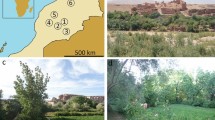Summary:
Communality is considered a widespread form of social organization in bees and wasps, one in which two or more females of the same generation share a common nest and amongst whom there is no reproductive division of labor. The evolution and maintenance of egalitarian communal societies poses theoretical difficulties where ‘cheating’ amongst nestmates is practised. Yet there is little knowledge of the intranidal social interactions among communal conspecifics that allow an understanding of the degree of cooperation versus exploitation amongst nestmates in such societies. Using a circle-tube arena, we staged interactions in the laboratory among pairs of female conspecifics using two communal andrenid species, Andrena scotica and Panurgus calcaratus, to score their cooperative and aggressive behaviors. For both species, females did not discriminate between familiar (nestmate) and unfamiliar (non-nestmate) conspecifics in their cooperative and aggressive behaviors, suggesting that there is universal acceptance of conspecifics. Levels of cooperation and aggression did not vary with the number of nestmates in the nest of origin for either species. In addition, frequencies of social interactions did not vary with body size, wing wear or ovarian development in P. calcaratus. Interspecific comparisons were made with published data on social interactions of other bee species at varying levels of social organization (solitary to eusocial) derived from analogous circle-tube experiments. Panurgus calcaratus displayed highly cooperative behavior, similar to that of a previously studied communal bee, Lasioglossum hemichalceum (Kukuk, 1992a). Andrena scotica displayed lower levels of cooperation, and was in this sense more similar to solitary species and to interactions amongst non-nestmate individuals of eusocial species. Both A. scotica and P. calcaratus displayed very low levels of aggressive behavior, again similar to L. hemichalceum. As a working hypothesis, we suggest the existence of a communal behavioral syndrome comprising high levels of intranidal cooperation and low aggression, both directed indiscriminately at conspecifics.
Similar content being viewed by others
Author information
Authors and Affiliations
Additional information
Received 29 August 1997; revised 25 March 1998; accepted 25 May 1998.
Rights and permissions
About this article
Cite this article
Paxton, R., Kukuk, P. & Tengö, J. Effects of familiarity and nestmate number on social interactions in two communal bees, Andrena scotica and Panurgus calcaratus (Hymenoptera, Andrenidae). Insectes soc. 46, 109–118 (1999). https://doi.org/10.1007/s000400050120
Issue Date:
DOI: https://doi.org/10.1007/s000400050120




